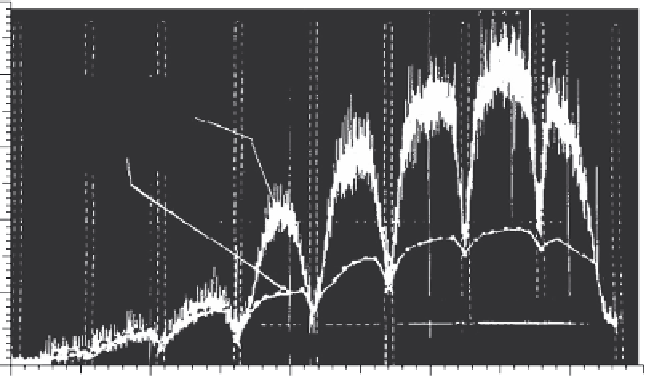Environmental Engineering Reference
In-Depth Information
100
80
Measured profile
Expected profile
60
40
20
47%
65%
100%
65%
65%
16% of time
boiling in pores
boiling at the surface
0
0
1000
2000 3000
Axial position from bottom (mm)
4000
1.28
Temperature profi le along the length of a PWR fuel clad results in
increased oxide layer thickness.
48
independent of each other. Change in fabrication route, which can result in
the second phase with a different composition, can reduce the susceptibility
to nodular corrosion but can lead to increased uniform corrosion.
The most commonly encountered corrosion types in the nuclear reactor
are uniform corrosion, nodular corrosion and shadow corrosion. Uniform
corrosion, as the name suggests, is associated with uniform oxide thicken-
ing and is commonly seen in PWRs and BWRs. Unlike the PWR environ-
ment where dissolved hydrogen is present in the coolant and the oxide fi lms
remained uniform over a very large thickness, the intermetallics present in
Zircaloy, under the BWR environment, promoted nodular corrosion. The
mechanism of oxide layer growth on Zircaloy under an irradiation envi-
ronment is complex. Uniform corrosion starts with low burnup and the
thickness of the grey oxide layer increases with burnup and operating tem-
perature. Unlike in BWRs where the outlet temperature and pressure are
limited, PWRs can operate at higher outlet temperatures but with the risk
of increased corrosion, and this effect is explicitly seen from the increased
oxide thickness with the elevation of the fuel rod. Figure 1.28
48
depicts the
profi le of the oxide thickness layer with the elevation in a typical PWR fuel
rod, indicating the increased oxide layer thickness with increase in tempera-
ture. The increased turbulence in the coolant close to the spacer grids (which
increases the cooling effi ciency) and their parasitic absorption of neutrons
result in the suppression of clad oxidation at these locations whereas the
fuel rod temperature along the length, and hence the oxide thickness, is
fairly uniform under a BWR environment.
49

Search WWH ::

Custom Search